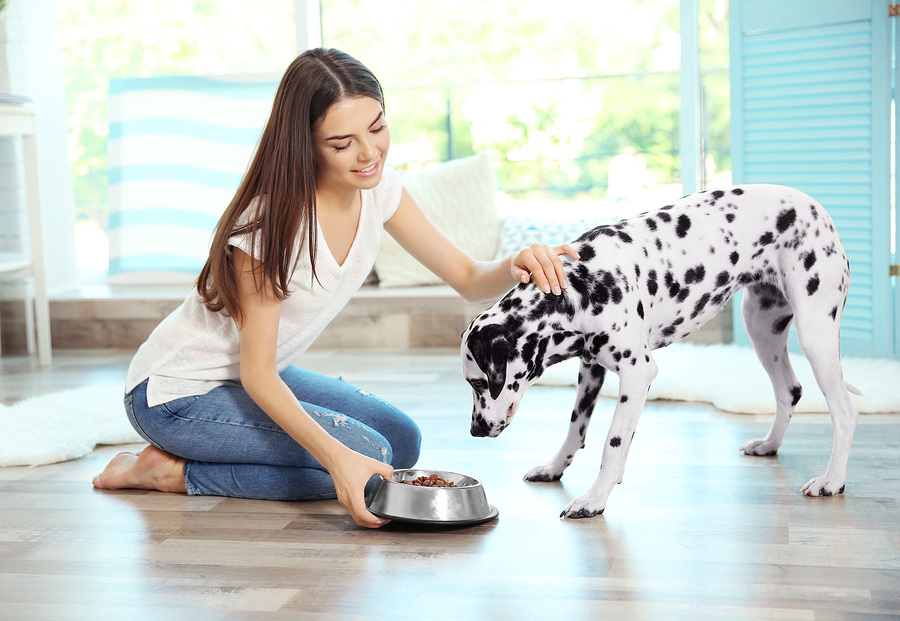
This post may contain affiliate links. We are compensated for referring customers to our affiliate partners.
Are you planning on switching your dog’s diet any time soon? From different stages of life to changes in lifestyle, there are plenty of reasons why you may be planning to introduce your dog to a new good dog food brand, type, or diet.
However, when it comes to getting your dog to transition to a new food, it can often feel like it easier said than done. Dogs and many other types of pets are creatures of habit and routine. Small changes don’t come easy to your loyal companion. So if you are planning to change up your dog’s diet, there are a few ways you can make the transition a whole lot easier.
1. Plan Ahead
Most owners should be able to anticipate when a change in dog food or diet will be coming up. For example, if your puppy has reached adulthood then you will need to change their puppy food into a more adult diet. However, there are several reasons as to why you may need to switch your dog’s food including life style, health condition, and age.
Since you are your dog’s owner, you will know better than anyone when these changes to diet will need to be made. Take advantage of your extra time to making sure you are prepared for the switch. You should ensure that you have enough of the old food for around 4 days or meals while also having the new food too. If you have something special coming up that could get in the way of your usual feeding schedule, then you may want to wait until after that event to begin the transition.
Before you do the switch, you may also want to speak with your vet to ensure you are making the right switch. This is especially important if you are considering a raw dog food diet or if you are planning to make your dog homemade food.
2. Use A Gradual Transition
So you have decided on making the switch and have chosen the new good dog food or diet to switch to, what should you do now? While you may be eager to make the switch immediately, it is better for you to make a gradual transition. Try to mix 25 percent of the new food into the old food. Keep increasing the amount of new food mixed in and lessen the amount of old food. You should be able to switch over completely over a course of 4 days.
3. Maintain Normal Feeding Patterns
If possible, you shouldn’t change anything about your dog’s feeding schedule aside from the food. The less you change about their meal time, the more comfortable your dog will be with a change in dog food or diet. Any abrupt changes will only make it more frustrating and stressful for your dog.
4. Improve The Appeal
If your dog has a habit about being finicky about new food, then you may want to try and boost the appeal. You could try to mix the new food with some warm water or you could begin by feeding your dog the new stuff by hand to make it seem more like a ‘treat’. However, if you do add water to the mixture, you will need to discard any uneaten portions after 30 minutes to prevent any spoilage.
5. Don’t Worry About A Missed Meal
If your dog is especially finicky about their food, you may find them picking out the old food and leaving any new food you may have tried to mix in. In some cases, you may even find your dog picking out the new and leaving the old. No matter what the case, a dog can miss one or two meals or eat less of a meal without consequence.
However, if your dog does end up missing quite a few meals, you may want to consider switching over to a different dog food. The missed meals could mean that there is something wrong with the new food that is causing your dog to be extra hesitant. Additionally, it wouldn’t be a bad idea to contact your vet to ensure your dog is healthy.
6. Monitor Their Response Carefully
Lastly, the best way to judge whether the new dog food is working for your dog is to keep a close eye on their response to these changes. Once your dog has accepted their new food and are eating it exclusively, you will need to wait for 6 to 8 weeks before you can fully evaluate how it is effecting your dog’s health.
A good dog food that is providing your loyal companion with optimal nutrition will help support an ideal body weight and condition, will promote healthy skin and coat, and should resist in consistent and normal stool volume. If you switched over to a more therapeutic diet or one for a particular health condition, then you will also want to schedule regular visits with your vet to ensure your dog’s body is reacting properly to the new food or diet.
No matter what food or diet you chose for your dog, you need to make sure that you provide them with free access to fresh and clean water. Additionally, you will want to make sure to maintain a consistent feeding schedule and to check your dog’s body weight and condition. If necessary, make adjustments to the amount of dog food offered, their feeding schedule, and exercise level to ensure they are as healthy as possible.

